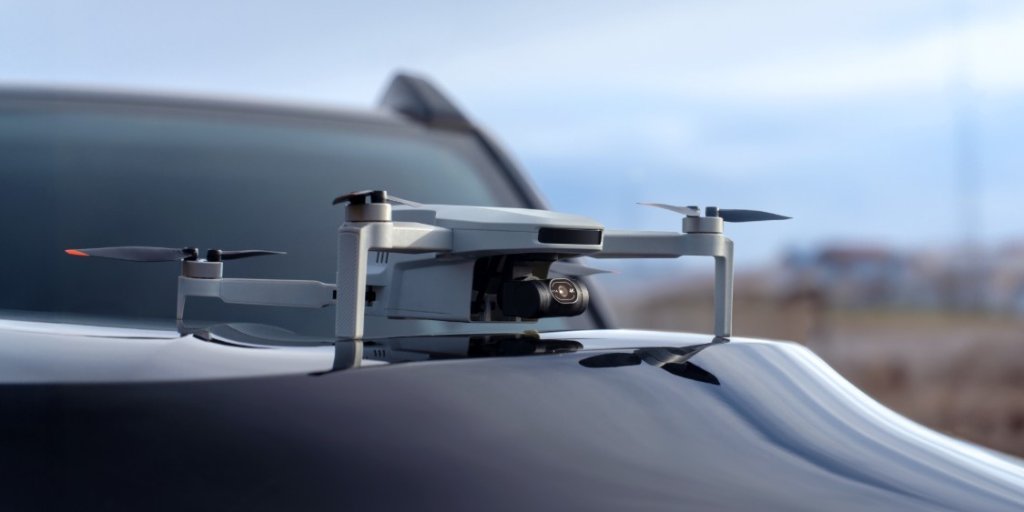As drones become increasingly popular for both recreational and professional use, understanding the key terms in the world of consumer drones is essential. Whether you’re a beginner looking to take your first flight or an experienced hobbyist expanding your drone knowledge, this guide covers some of the most common drone terms you'll encounter.
1. Flight Control System
The Flight Control System (FCS) is the brain of any drone. It integrates sensors, GPS, and software to stabilize the drone and ensure smooth flight. The FCS helps with maintaining balance during flight, adjusting to wind, and providing smooth control during movements.
2. Remote Controller (RC)
The Remote Controller is the device used to control a drone from a distance. It’s equipped with joysticks, buttons, and sometimes a screen, enabling the pilot to control the drone’s movement, camera, and other features. Many modern drones also allow control through smartphones with apps connected via Wi-Fi or Bluetooth.
3. Battery Life
Battery Life refers to how long a drone can fly on a single charge. This is one of the most important aspects of a drone’s performance, as it affects how much time you have to capture footage or enjoy the flight experience. Most consumer drones offer anywhere from 15 to 30 minutes of flight time, but this can vary depending on the model and battery size. For Potensic ATOM Series drones, the battery life range is about 31–40 mins.
4. Maximum Flight Altitude
Maximum Flight Altitude is the highest point a drone can reach while in flight. This value is typically limited by regulations to ensure safety and avoid airspace conflicts. Many consumer drones have a maximum altitude of around 120 meters in compliance with aviation laws.
5. Maximum Flight Range
Maximum Flight Range refers to the distance a drone can fly from its controller or remote. For consumer drones, this range can vary significantly, from a few hundred meters to several kilometers, depending on the drone’s design, the power of its transmitter, and the quality of the GPS signal. The new ATOM 2 drone can fly up to 10 km.
6. GPS Positioning
GPS Positioning allows a drone to determine its location using signals from satellites. This system enables features such as Return to Home (RTH), where the drone automatically returns to its takeoff point if the signal is lost or if the battery is low. GPS also helps drones stay stable during flight and navigate specific paths.
7. Visual Tracking
Visual Tracking is a feature that allows drones to follow a subject (such as a person, vehicle, or animal) using the drone’s camera. Unlike GPS tracking, which requires a GPS signal from the subject, visual tracking uses the drone’s onboard cameras and algorithms to lock onto and follow the target in real-time. This feature is popular for capturing dynamic shots in action or outdoor photography.
8. Intelligent Flight Modes
Modern consumer drones come equipped with Intelligent Flight Modes, which automate certain aspects of flying for ease of use. Common modes include:
- Follow Me: The drone follows the pilot or a moving object.
- Waypoint Flight: The drone flies to preset locations on a map autonomously.
- Orbit Mode: The drone orbits a specific point, keeping the camera locked on it.
- QuickShots: Simply select your subject, and the drone automatically captures stunning shots.
The ATOM 2’s AI QuickShots feature includes six cinematic modes: Pull-Away, Rocket, Circle, Spiral, Boomerang, and Dolly Zoom, allowing you to create dynamic footage effortlessly. These modes are particularly useful for beginners, as they simplify the flight experience while allowing advanced users to capture complex shots.
9. Gimbal
A Gimbal is a device that stabilizes the drone's camera during flight, preventing shaky or blurry footage. It ensures smooth, cinematic shots, even when the drone experiences wind or other external factors. A gimbal works by compensating for the drone’s movements and keeping the camera steady on its axis.
10. Obstacle Avoidance
Obstacle Avoidance refers to a drone’s ability to detect and avoid obstacles in its flight path using sensors, such as ultrasonic, infrared, or LiDAR. This technology helps prevent accidents and improves the safety of flying, especially in tight spaces or near trees, buildings, or other objects.
11. FPV (First-Person View)
FPV (First-Person View) is a mode where the pilot sees the flight from the drone’s perspective, typically via goggles or a screen on the controller. It offers an immersive experience, making it feel like you’re flying inside the drone. FPV is popular in drone racing and professional cinematography for its ability to capture unique perspectives.
12. Gyroscope
The Gyroscope is a sensor in the drone that measures its rotation and orientation. It helps the drone maintain its stability during flight, ensuring that it doesn’t tilt or spin uncontrollably. The gyroscope works in combination with the accelerometer to keep the drone stable and level during flight.
13. Geofencing
Geofencing is a feature that sets a virtual boundary around a drone’s flying area. If the drone flies outside this predetermined area, it will trigger an alert or automatically return to its launch point. This feature is useful for preventing drones from entering restricted airspace or going too far from the operator.
14. Flight Log
A Flight Log stores important flight information, such as altitude, speed, GPS coordinates, and battery levels. This data can be used for troubleshooting, performance analysis, or simply for tracking your drone's usage.
As drones continue to grow in popularity, understanding common drone terminology is essential for both beginners and seasoned enthusiasts. Whether you're looking to learn about GPS positioning, visual tracking, or intelligent flight modes, mastering these terms will enhance your flying experience and help you make informed decisions when choosing your next drone.
If you're looking for a drone that fits your needs, consider exploring Potensic's range of drones, which offer cutting-edge features like intelligent flight modes and high-quality cameras for both novice and experienced drone pilots.

